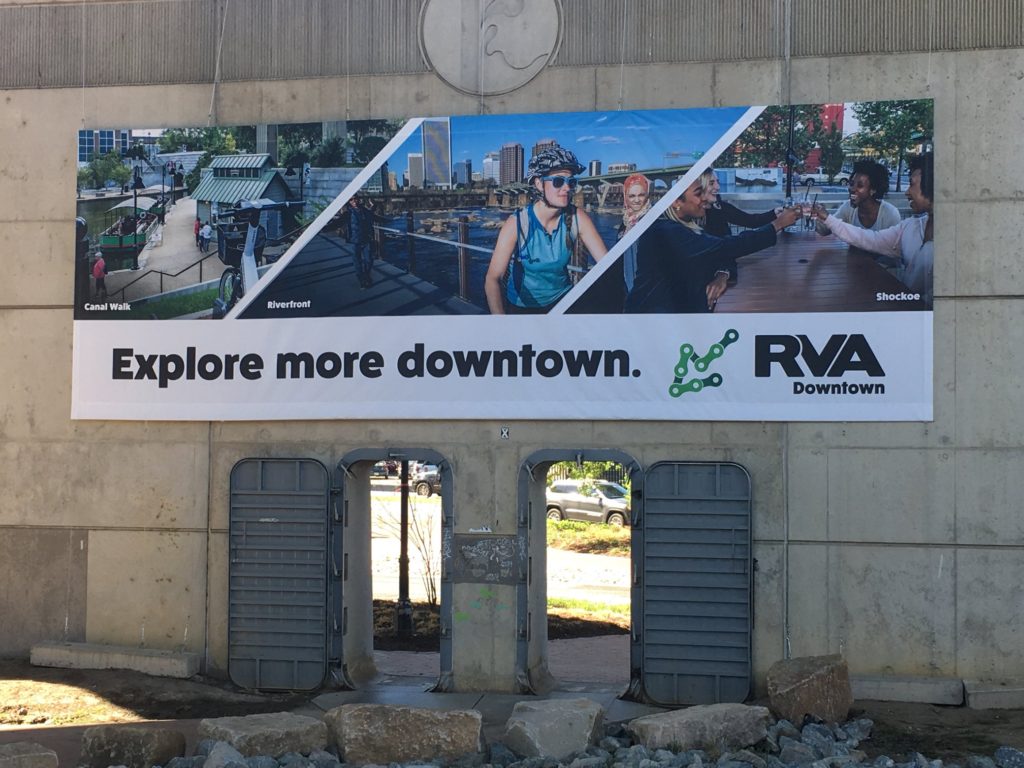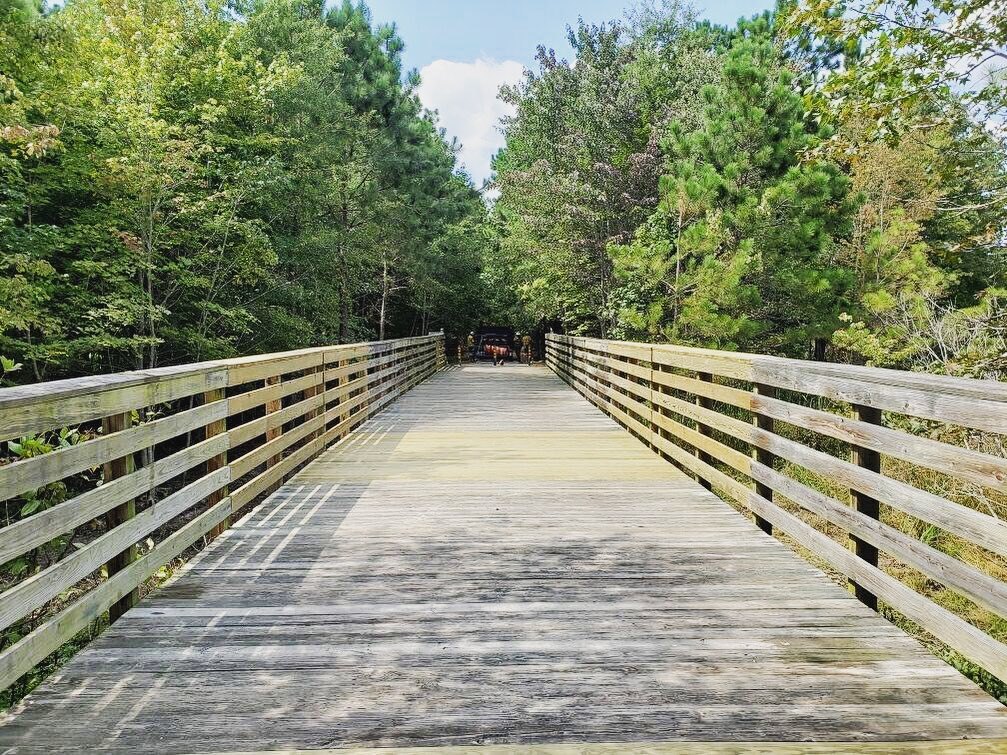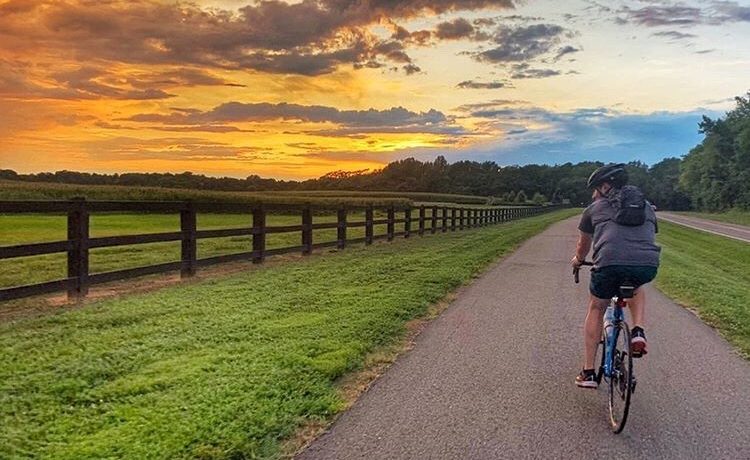When the Virginia Capital Trail opened in its entirety nearly four years ago, Greater Richmond was getting just a glimpse of what the picturesque path would have to offer.
The Capital Trail has since hosted a steady stream of runners, pedallers, rollers, sightseers, and strollers each day. According to Cat Anthony, executive director of the Virginia Capital Trail Foundation (VCTF), 976,056 users were counted along the Capital Trail between July 1, 2018 and June 30, 2019. 213,388 of these visitors were counted on the Richmond section alone.
In the Greater Richmond area, the Capital Trail offers access to destinations ranging from workplaces to wineries, supporting the varied activities of a dynamic metropolitan area.

“The Richmond portion is pretty special,” says Anthony, who explains that the Downtown Richmond area is the Trail’s most heavily trafficked segment. Offering striking views of the river and the city, verdant Low Line Gardens, and proximity to restaurants at Rockett’s Landing and the Canal Walk, she points out that in this area, “You really get the best of both worlds!”
Keeping pace with the public’s enthusiasm, VCTF—steward of the Capital Trail’s 51.7 miles stretching from Williamsburg to Richmond—is steadfast in its efforts to maintain and enrich the Capital Trail experience. The foundation works with such partners as the Virginia Department of Transportation (VDOT) manage the safety and beauty of the space.
Beyond preserving and improving upon the existing path, VCTF focuses its efforts toward nurturing its growth.

“We want to continue to expand our programming, events, and connector trails to create a regional transportation system,” Anthony explains. “We also want to make it a priority to partner with other organizations in the community to get more people active and have access to transportation options.”
“All of the jurisdictions are excited about this leg of the trail,” says Jack Berry, president and CEO of Richmond Regional Tourism.
Berry, who describes the Capital Trail as, “the gift that keeps on giving,” cites evidence of the Capital Trail’s impact on tourism and local business. “We see people getting off trains from the North with bikes,” he notes. “We see bike riders at different restaurants and watering holes along the Trail.”

The popularity of the Capital Trail among both tourists and locals is evident in the diversity of its users—representing a range of ages, backgrounds, levels of ability, and recreational interests—and in the eagerness of the community to contribute to its success. VCTF enlists around 100 volunteers twice each year for trail clean-ups. Over 60 supporters participate in the Trail Ambassador Program, identifying maintenance issues and providing aid and guidance to visitors. In the near future, VCTF also plans to introduce an Adopt-a-Trail program for groups who want to tackle regular cleanups of one trail-mile.

The foundation’s efforts in organizing volunteers, facilitating events, expanding access, and engaging the community in the life of the Capital Trail. Working steadily to launch new initiatives, VCTF is committed to developing the Capital Trail’s potential as a blossoming and enduring public resource.
“The VCTF would like to continue to grow,” says Anthony, “Our goal is to continue to protect and enhance the Capital Trail for future generations to utilize.”
For more information about the Capital Trail, visit www.virginiacapitaltrail.org.
Featured photo by Casey Kasko.

